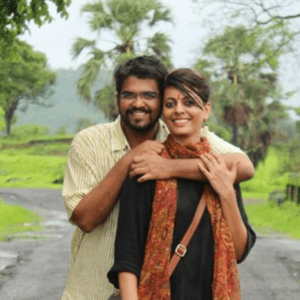Political Landscape: Total Parties and Their Alliances
The 2024 Maharashtra Assembly elections are set to be highly competitive, with all 288 constituencies in the state up for grabs. The elections are characterized by both prominent coalitions and smaller independent parties vying for influence.
- Major Alliances:
- Mahayuti Alliance: This ruling coalition includes the Bharatiya Janata Party (BJP), Shiv Sena (Eknath Shinde faction), and NCP (Ajit Pawar faction).
- Maha Vikas Aghadi (MVA): The opposition alliance consists of Congress, Shiv Sena (Uddhav Thackeray faction), and NCP (Sharad Pawar faction).
- Smaller Parties:
- Maharashtra Navnirman Sena (MNS) led by Raj Thackeray.
- Bahujan Samaj Party (BSP) and All India Majlis-e-Ittehadul Muslimeen (AIMIM) are also expected to contest independently.
The diversity of political contenders ensures a multi-faceted and dynamic election process
Pre-Election Marketing: An Expensive Affair

Political campaigns in India have evolved significantly, with technology playing a central role. Campaigns today encompass traditional rallies, door-to-door canvassing, and extensive social media outreach. The financial implications of such elaborate campaigns are staggering:
- Estimated Expenditures by Major Parties:
- Mahayuti Alliance: ₹500-700 crore, owing to its extensive digital and grassroots campaigns.
- Maha Vikas Aghadi (MVA): ₹400-600 crore, focusing on traditional rallies and targeted social media ads.
- Smaller parties like MNS and AIMIM: ₹50-100 crore each, emphasizing their niche voter bases.
- Breakdown of Campaign Expenditures:
- Digital Campaigns: Over ₹200 crore is likely spent collectively on platforms like Facebook, Instagram, and YouTube.
- Traditional Media: Television and newspaper ads consume a significant share of the budget.
- Rallies and Roadshows: High-profile rallies with celebrity endorsements contribute heavily to expenditure.
Political campaigns are no longer confined to speeches and rallies; instead, they encompass influencer marketing, video content, and targeted voter outreach
Funding Sources: Where Does the Money Come From?
Campaign financing remains a critical area of concern in Indian elections. The sources of funding include:
- Corporate Donations:
Corporates contribute a significant portion of funds, often through electoral bonds, which allow anonymous donations. - Individual Contributions:
Parties receive money from supporters, with amounts above ₹20,000 requiring disclosure. - Membership Fees and Merchandise:
Some parties rely on these streams for partial funding. - Unaccounted Cash Transactions:
Despite regulations, a significant portion of campaign funding remains undocumented, leading to transparency concerns.
Laws Governing Election Expenditure
India has robust laws to regulate election spending. However, enforcement and transparency remain challenges.
- Key Legislations:
- Representation of the People Act, 1951: Mandates reporting of campaign expenditures.
- Election Commission Guidelines: Parties must disclose contributions exceeding ₹20,000.
- Electoral Bonds:
Introduced in 2017, these bonds allow anonymous donations, sparking debates about the lack of donor transparency. - Expenditure Limits:
Candidates contesting assembly elections are restricted to spending ₹28 lakh. However, party-level spending has no upper cap, often bypassing individual limits.
Accountability: Bridging the Transparency Gap
The lack of transparency in campaign funding is a concern for democracy. Potential solutions include:
- Public Disclosure:
Making all funding sources and amounts public would enhance transparency. - Independent Audits:
Mandating audits of party accounts by third-party agencies could deter misuse of funds. - Capping Party-Level Expenditures:
Introducing expenditure limits at the party level could reduce financial excesses. - Real-Time Tracking:
Utilizing technology to monitor campaign spending in real-time would prevent violations.
Is This Expenditure Justifiable?
While campaigning is crucial for voter engagement, the excessive spending on marketing often raises ethical and practical questions. Critics argue that funds could be better allocated toward initiatives benefiting citizens directly:
- Public Welfare Projects:
Redirecting campaign funds to healthcare, education, or infrastructure projects could address pressing issues. - Grassroots Development:
Investing in rural development, skill training, and employment programs would yield long-term benefits. - Reducing Economic Inequality:
Channeling resources toward poverty alleviation would improve living standards and public trust in governance.
The Road Ahead: A Call for Reform
India’s democracy thrives on active citizen participation and informed decision-making. However, the current state of campaign financing demands urgent reforms. By prioritizing accountability, transparency, and meaningful public engagement, India can ensure elections truly reflect the will of the people.
The 2024 Maharashtra elections are not just a battle of votes but a testament to the resilience of democracy. As voters, it is our responsibility to demand transparency and prioritize candidates committed to real change over extravagant campaigns.

















What do you think?
It is nice to know your opinion. Leave a comment.